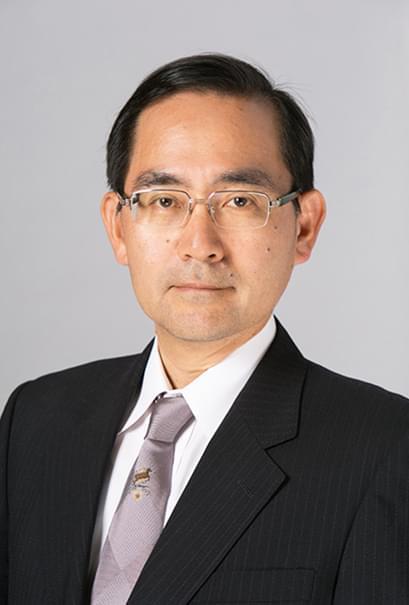English
Greeting

Department
Diagnostic Radiology
Advances in medical diagnostic equipment and procedures, which occur at a remarkable pace, have necessitated a progression away from field and organ-specific knowledge towards a more interdisciplinary approach. As a specialized department fit to respond to such changes, we at the Diagnostic Radiology Division use the latest equipment to perform procedures such as X-ray, CT, MRI, RI, PET, and PET/CT to ensure the accurate imaging diagnosis of cancer and other various conditions.
Based on an examination request from the attending physician, the designated radiologist considers the appropriate imaging method according to the patients’ medical conditions. The role of the diagnostic radiologist is to examine and extract abnormal findings from all images and to communicate with the attending physician. Furthermore, in emergency cases or upon detecting a malignant tumor, we cooperate with the attending physician to ensure no details in the examination have been overlooked.
In addition to dual-energy CT, 3-Tesla MRI, PET/MRI, we are using and developing the latest imaging methods and contrast agents that allow us to extract higher quality images. Finally, by using iterative reconstruction to reduce radiation exposure and using low tube voltage to reduce the amount of contrast agent needed, we aim to develop imaging methods that truly service the needs of the patient.
Nuclear Medicine
Nuclear medicine examinations enable us to image and measure the functions and abnormalities of the following, as well as making tumor-detection possible:
- The central nervous system
- Various respiratory, digestive, urogenital, and circulatory organs
- Bone soft-tissue and joints
- Endocrine organs
- Blood / hematopoietic organs
By introducing and imaging a drug marked by a radioactive isotope with a short half-life, we measure the functions of organs while mitigating the stress imposed on the patient. Such imaging techniques help us make accurate diagnoses as they provide information that is difficult to recognize on X-ray, CT, and MRI. Recently, positron emission tomography (PET) has also gained significant attention.
The Nuclear Medicine / PET group here at the Kobe University Department of Radiology performs general nuclear medicine and PET examinations, while referring to CT, MRI, ultrasound, and endoscopic examinations to form more comprehensive diagnoses. Each individual drug used in the nuclear/PET examination provides specific information – thus, each drug has both advantages and limitations. A thorough understanding of each drug allows us to utilize their distinct characteristics to aid us in various clinical situations.
An increasing number of doctors in our department are well-versed in PET interpretation. In clinical PET examinations, the PET drug 18 F-fluorodeoxyglucose (18 F-FDG) – a substance similar to glucose – is used most frequently. Working with other modalities within the hospital allows us to understand the truly important role that PET plays in diagnostic imaging. The study of nuclear medicine is an excellent opportunity for both foundational and specialized training, as it enables physicians to pursue qualifications such as specializations in radiology or nuclear medicine, as well as accreditation in PET nuclear medicine.
In addition to standard PET/CT devices, Kobe University Hospital has installed a PET / MRI integrated device – one of approximately ten units in the country – which has opened new clinical and academic possibilities in the field of diagnostic imaging.
Interventional Radiology (IVR)
Interventional Radiology entails treatment using diagnostic equipment, but it can be more specifically defined as minimally invasive treatment methods such as: endovascular surgery, endovascular treatment, and image guided treatment. Considering the severely aging population of Japan (of which 1 in 4 people are over the age of 65), the necessity for a minimally invasive treatment option such as IVR is clearly growing.
Our department oversees more than 1,000 medical cases per year, and we practice various IVR methods to treat different conditions:
- Trans-arterial chemoembolization (TACE) for the treatment of hepatocellular carcinoma
- Percutaneous transluminal angioplasty (PTA) for the treatment of arteriosclerosis obliterans (ASO)
- Embolization for the treatment of visceral aneurysms
Moreover, with the help of angiographic devices situated in the Hybrid Operating Room, we are now able to perform more advanced and complex procedures which require surgical support such as aortic stent-grafting and obstetric balloon stenting for blood loss control. We also treat patients suffering from traumatic injuries, perinatal bleeding, and aortic aneurysm ruptures on a 24/7 emergency basis. We also consistently cooperate with other departments on various procedures and hold regular conferences with the cardiovascular surgery and gastrointestinal medicine/surgery departments to conduct case examinations.
Other relevant activities include participation in national, multi-institution clinical trials at the Japan Clinical Oncology Group (JCOG) and Japan IVR in Oncology Study Group (JIVROSG). Our department also contributes to the development and standardization of advanced treatment methods by directing several of these clinical trials.
Currently, there are seven staff members specializing in IVR, and several are also leaders in thoracic/abdominal aneurysm stent-grafting. In addition, while actively accepting doctors in different departments (e.g. emergency, vascular surgery) and students from overseas, we have sent many of our staff overseas in return and encourage them to disseminate their unique knowledge to the world. If you are a medical student, researcher, or specialist with a passion for interventional radiology, we at the Kobe University IVR group await you with welcome arms!
Achievement
Access
7-5-2, Kusunoki-cho, Chuo-ku, Kobe, Hyogo, JAPAN
By subway:
5 minutes on foot from Kobe Municipal Subway OHKURAKAMA station
By train:
- 15 minutes on foot
- 5 minutes by #9 bus from JR KOBE station (alight at Daigaku-byōin Mae)
- 5 minutes by taxi
- 15 minutes by taxi
